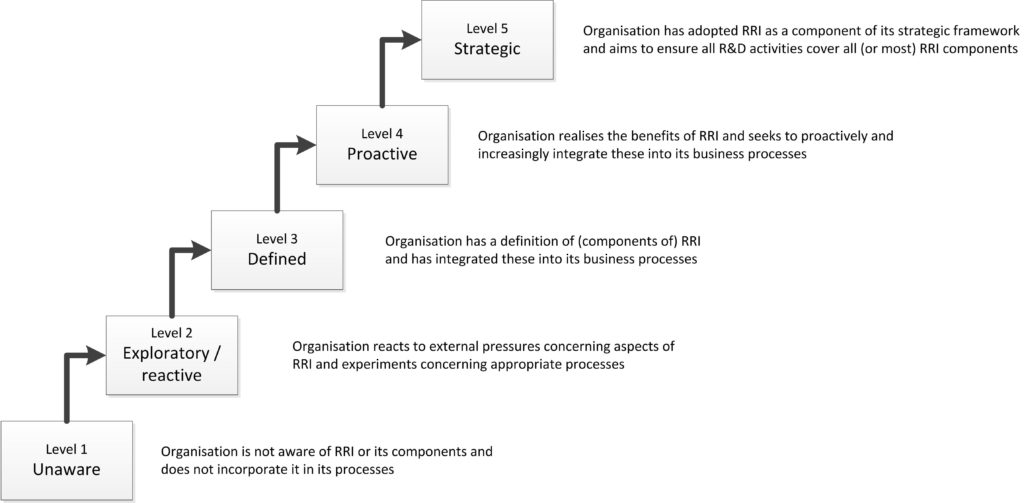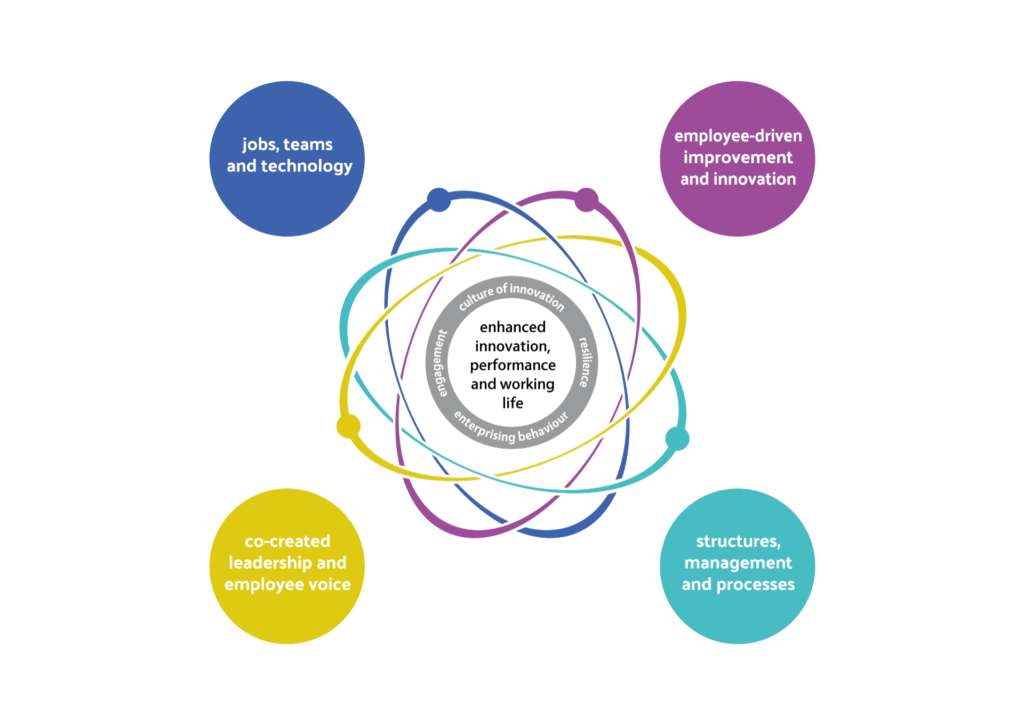Featured
Encouraging Innovation in Entrepreneurship

From theory to practice • Business innovation • Social innovation • Organizational support
In his best-selling book The Design of Everyday Things, Don Norman (2013) wrote that his interest in design led to him leaving the Cognitive Science Department at the University of California, San Diego, to take executive positions at Apple and Hewlett-Packard. Norman’s experience in industry, he explained, taught him about the complexities of the real world. Designers must adhere to budgets and schedules, pay attention to competition, and work across multidisciplinary teams. Their products typically result from incremental innovation. Radical innovation is rare and can take a long time to find acceptance.

Norman’s observations about innovation’s slow transition from theory to practice resonated with me as I worked through the many stages of developing my forthcoming sixth book, Encouraging Innovation: Cognition, Education, and Implementation (Reed, 2023). The third part of the book—and the focus of this article—explores the implementation of the cognitive and social skills required for innovation. Here’s a brief look at the transition from theory to practice, business innovation, social innovation, and organizational support.
From theory to practice
My interest in writing the book developed over numerous discussions with my former colleague at San Diego State University, Tom Carey. Tom has since returned to Canada where he now directs award-winning international collaborations for innovation in higher education (Nobis et al., 2022). Because Tom’s education development projects did not give him time to coauthor, I therefore found myself for the first time writing about a topic on which I had meager knowledge. I had seldom encountered the word “innovation” in my psychology readings, so researching the process of how to turn creativity into innovation became my goal—a goal that required reading outside the field of psychology.
Thus began my plunge into that wonderful gift to academics—Google Scholar—which enabled me to locate relevant journal articles on innovation. In addition, I read a number of books that were written for a general audience, some by innovators and entrepreneurs themselves. These included The Rise of the Rest: How Entrepreneurs in Surprising Places Are Building the New American Dream by venture capitalist Steve Case, who made his first fortune as the founder of America Online (AOL). Drawing from popular books, I hope, will make Encouraging Innovation more engaging and informative to a wide readership. It also enabled me to continue writing while taking a break to read bestsellers. Reading and summarizing academic books and articles is hard work. Reading popular books is not.
Recommended Reading About Innovation
Case, Steve (2022). The Rise of the Rest: How Entrepreneurs in Surprising Places Are Building the New American Dream. Simon & Schuster.
Epstein, David (2019). Range: Why Generalists Triumph in a Specialized World. Riverhead Books.
Finegan, Tom. (2021). Amplifiers. John Wiley & Sons.
Fadell, Tony (2022). Build: An Unorthodox Guide to Making Things Worth Making. HarperCollins.
Gates, Bill (2021). How to Avoid a Climate Disaster: The Solutions We Have and the Breakthroughs We Need. Alfred A. Knopf.
Grant, Adam (2016). Originals: How Non-conformists Move the World. Viking.
Grant, Adam (2021). Think Again: The Power of Knowing What You Don’t Know. Viking.
Isaacson, Walter (2014). The Innovators: How a Group of Hackers, Geniuses, and Geeks Created the Digital Revolution. Simon & Schuster.
Isaacson, Walter (2021). The Code Breaker: Jennifer Doudna, Gene Editing, and the Future of the Human Race. Simon & Schuster.
Kahneman, Daniel (2011). Thinking Fast and Slow. Farrar, Straus and Giroux.
Kennedy, Pagan (2016). INVENTology: How We Dream Up Things That Change the World. Houghton Mifflin Harcourt.
List, John (2022). The Voltage Affect: How to Make Good Ideas Great and Great Ideas Scale. Currency.
Norman, Don (2013). The Design of Everyday Things: Revised and Expanded Edition. Basic Books.
Poole, Steven (2016). RETHINK: the Surprising History of New Ideas. Scribner.
Ridley, Matt (2020). How Innovation Works: and Why It Flourishes in Freedom. HarperCollins.
Robson, David (2019). The Intelligence Trap: Why Smart People Make Dumb Mistakes. W. W. Norton & Company.
Sawyer, R. Keith (2013). ZIG ZAG: The Surprising Path to Greater Creativity. Jossey-Bass.
Slootman, Frank (2022). Amp It Up. John Wiley & Sons.
Thaler, Richard & Sunstein, Cass (2021). Nudge: The Final Edition. Penguin Books.
Business innovation
Innovation and entrepreneurship, the theme of this issue of the Observer, are closely associated: Innovation, broadly speaking, involves introducing a new idea, such as a product, service, or model; entrepreneurship involves turning that idea into a business opportunity—and then operating that business to generate a profit.
Business innovation is related to commercialization, market demands, and profitability. But what does innovation even mean? An editorial in a special issue of the European Journal of Social Science Research noted the difficulty of simply defining the term, whose excessive use as a buzzword has produced a variety of meanings absent stable content, the editors complained (Božić, 2022). One of the articles in the issue analyzed 208 definitions for common themes (Singh & Aggarwal, 2022), ultimately defining innovation as “the operationalization of creative potential with a commercial and/or social motive by implementing new adaptive solutions that create value, harness new technology or invention, contribute to competitive advantage and economic growth.”
An influential measure of business innovation developed by the Drucker Institute (First, 2021, p. R2) also emphasizes economic growth. The general principle is that innovation creates resources for building new and greater wealth. Novelty is a side effect, not the essence. Predictors that underlie the creation of wealth include research and development spending, hiring in cutting-edge fields such as robotics and artificial intelligence (AI), the number and value of patents, customer satisfaction, and employee engagement. It may not be surprising, then, that the three top companies in the institute’s 2021 rankings were Amazon, Microsoft, and IBM.
In his book Amp It Up, Frank Slootman (2022) claimed that great execution—the ability to scale and manage a mature organization in a disciplined manner—is rarer than great strategy. On the basis of his extensive experiences as a software entrepreneur and executive, Slootman argued that a common mistake is relying on innovators to provide discipline. Innovation and discipline seldom go hand in hand. Leaders can become amplifiers by engaging followers, possessing the kind of knowledge that fits corporate needs, and avoiding cognitive entrenchment.
Erik Dane (2010) defined “cognitive entrenchment” as a high level of knowledge stability that causes experts to be inflexible in their thinking. It can restrict an expert’s ability to identify optimal solutions to problems, adapt to novel situations, and generate creative ideas. But an argument can also be made that cognitive entrenchment has some advantages, necessitating decisions about when it is advantageous and when it is detrimental (Phan & Ngu, 2021). Seeking novel solutions can be disruptive and increase cognitive load. A quest for optimal efficiency by using the least amount of time, effort, and resources to accomplish a task often requires capitalizing on existing knowledge.
Social innovation
Social innovation addresses fulfilling social needs and public demands (Oeij et al., 2019). It depends more on gaining government support and satisfying interest groups than on attracting investors. Peter Oeij and colleagues identified six different paths to achieving social innovation (filling a gap, self-reliant empowerment, incremental progress, power-based design, powerful people and leadership, and resilient goal setting) that are differentiated by the presence or absence of supporting variables such as stakeholder commitment, financial and political support, overcoming setbacks, consensus, availability of staff, leadership, and infrastructure.
As an example of incremental progress, Oeij and colleagues wrote about the “Storytelling Grandmas” from Argentina, a project promoting the intergenerational tradition of reading in early childhood and providing elderly people with a meaningful role in society. An example of power-based design is the She Taxi project in India, which offers cab service for women travelers and is operated by women entrepreneurs. Its objective is to provide safety and security for women, entrepreneurship by women, and employment for women.

Businesses can support social innovation by conducting responsible research that aims to ensure that research purposes, processes, and outcomes are acceptable, desirable, and sustainable (Stahl et al., 2017). Specifically, responsible research can contribute to the success of an effort through better public branding, alignment with regulatory requirements, and employee satisfaction. The Responsible Research and Innovation Maturity Model is a measure of an organization’s progress toward fulfilling responsible objectives, with five levels from initial unawareness to incorporating responsible research and innovation into the strategic framework. The authors evaluated the model’s usefulness within three different industry environments by interviewing high-level managers (chief executive officers, chief operating officers), middle-level managers (innovation managers, software development managers), and technical staff. The researchers then used their findings to inform the organizations about the strengths and weaknesses of their current practices. A goal for further research is to develop the model as a tool that organizations can use for self-assessment.

AI provides another pathway to social innovation. In a 2021 article, Ganesh Mani (2021) argued that the technology’s grand challenges for the current decade cover health, wealth, and wisdom. For instance, he wrote, old age is a major health concern throughout the world, and help for seniors is in short supply. Robots and smart software could assist seniors who do not have major behavioral or cognitive impairments. A wearable device with reliable alerts could signal low blood sugar levels or even dial 911 when a condition becomes critical. Help for seniors with dementia could include reminders for nutrition, exercise, personal hygiene, recreation, and communication.
Organizational support
Scholarship on responsible research has only recently moved from universities to private, governmental, and civil organizations, according to an article in the Journal of Responsible Innovation (Steen & Nauta, 2020). This movement provides an opportunity to promote openness and collaboration among groups for organizing innovation both with and for society. Collaboration among groups occurs at multiple levels, from large international organizations involving multiple countries to small regional organizations within a country.
The European Workplace Innovation Network (EUWIN) is an example of an organization that promotes cooperation among members of the European Union. The Fifth Element framework (see figure) serves as EUWIN’s guide to workplace innovation. The Element—in the center of the figure—aligns the four reinforcing practices that surround it (Peter Totterdill and Workplace Innovation Europe CLG, retrieved from https://workplaceinnovation.eu/the-essential-fifth-element-guide-to-workplace-innovation/). The other four elements are teams and technology, employee-driven innovation, organizational structures, and leadership. This concept illustrates transformations that can occur only when the other four elements combine. The framework helps users navigate EUWIN’s online knowledge bank, which consists of case studies, articles, films, and other learning resources (Totterdill, 2015).

National organizations support innovation by providing guidance, partnerships, and financial assistance, as exemplified in the global fight against the COVID-19 pandemic (Chigova & Hofisi, 2021). Government agencies, in turn, work within countries but with a specific focus (e.g., the United States Department of Energy). Regional alliances help coordinate efforts by connecting communities and regions to government agencies. An example is the Science Action Network, which provides mechanisms to improve trust and communication among government administrators, industry representatives, and scientists (Mease et al., 2017).
Encouraging Innovation: Cognition, Education, and Implementation is scheduled to be published by Cambridge University Press in September, with a target audience of people in education and other organizations who desire an overview of recent thinking about innovation. My hope is that its discussion of theories, experimental research, interviews, and the organization of the resulting ideas in practical frameworks will help individuals and organizations become better innovators.
Updated, June 7, 2023: Encouraging Innovation: Cognition, Education, and Implementation is available for preorder from Cambridge University Press.
Božić, S. (2022). Grounding innovation: towards an integrated concept. Innovation: the European Journal of Social Science Research, 35, 173–176. https://doi.org/10.1080/13511610.2022.2069633
Chigova, L. E., & Hofisi, C. (2021). Challenges and opportunities of public sector innovation in fighting the COVID-19 pandemic. International Journal of Criminology and Sociology, 10, 1717–1725.
Dane, E. (2010). Reconsidering the trade-off between expertise and flexibility: A cognitive entrenchment perspective. Academy of Management Review, 35, 579–603. https://doi.org/10.5465/AMR.2010.53502832
First, Z. (2021, December 13). How to measure innovation? Here’s how we do it. The Wall Street Journal.
Gates, B. (2021). How to avoid a climate disaster: The solutions we have and the breakthroughs we need. Alfred A. Knopf.
Mani, G. (2021). Artifical intelligence’s grand challenges: Past, present, and future. AI Magazine, 42, 61–75.
Mease, L. A., Gibbs-Plessl, T., Erickson, A. L., Reddy, C. M., & Lubchenco, J. (2017). Designing a solution to enable agency–academic scientific collaboration for disasters. Ecology and Society, 22(2), Article 18. https://doi.org/10.5751/ES-09246-220218
Nobis, F., Stevenson, M., Baragheh, A., & Carey, T. (2022). Engaging students with an adaptable model for workplace innovation capability. In D. Remenyi (Ed.), Anthology of case stories: Innovation & entrepreneurship teaching excellence awards 2022. An anthology of case histories (pp. 1–18). Academic Conferences International.
Norman, D. A. (2013). The Design of Everyday Things: Revised and Expanded Edition. Basic Books.
Oeij, P. R. A., van der Torre, W., Vaas, F., & Dhondt, S. (2019). Understanding social innovation as an innovation process: applying the innovation journey model. Journal of Business Research, 101, 243–254. https://doi.org/10.1016/j.jbusres.2019.04.028
Phan, H. P., & Ngu, B. H. (2021). A case for cognitive entrenchment: to achieve optimal best, taking into account the importance of perceived optimal efficiency and cognitive load imposition. Frontiers in Psychology, 21(662898), 1–19. https://doi.org/10.3389/fpsyg.2021.662898
Reed, S. K. (2023). Encouraging innovation: Cognition, education, and implementation. Cambridge University Press.
Singh, S., & Aggarwal, Y. (2022). In search of a consensus definition of innovation: a qualitative synthesis of 208 definitions using grounded theory approach. Innovation: the European Journal of Social Science Research, 35, 177–195. https://doi.org/10.1080/13511610.2021.1925526
Slootman, F. (2022). Amp It Up. John Wiley & Sons.
Stahl, B. C., Obach, M., Yaghmaei, E., Ikonen, V., Chatfield, K., & Brem, A. (2017). The responsible research and innovation (RRI ) maturity model: Linking theory and practice. Sustainability, 9(1036), 1–19. https://doi.org/10.3390/su9061036
Steen, M., & Nauta, J. (2020). Advantages and disadvantages of societal engagement: a case study in a research and technology organization. Journal of Responsible Innovation, 7, 598–619. https://doi.org/10.1080/23299460.2020.1813864
Totterdill, P. (2015). Closing the gap: the fifth element and workplace innovation. European Journal of Workplace Innovation, 1(1), 55–74. https://doi.org/10.46364/ejwi.v1i1.166





APS regularly opens certain online articles for discussion on our website. Effective February 2021, you must be a logged-in APS member to post comments. By posting a comment, you agree to our Community Guidelines and the display of your profile information, including your name and affiliation. Any opinions, findings, conclusions, or recommendations present in article comments are those of the writers and do not necessarily reflect the views of APS or the article’s author. For more information, please see our Community Guidelines.
Please login with your APS account to comment.